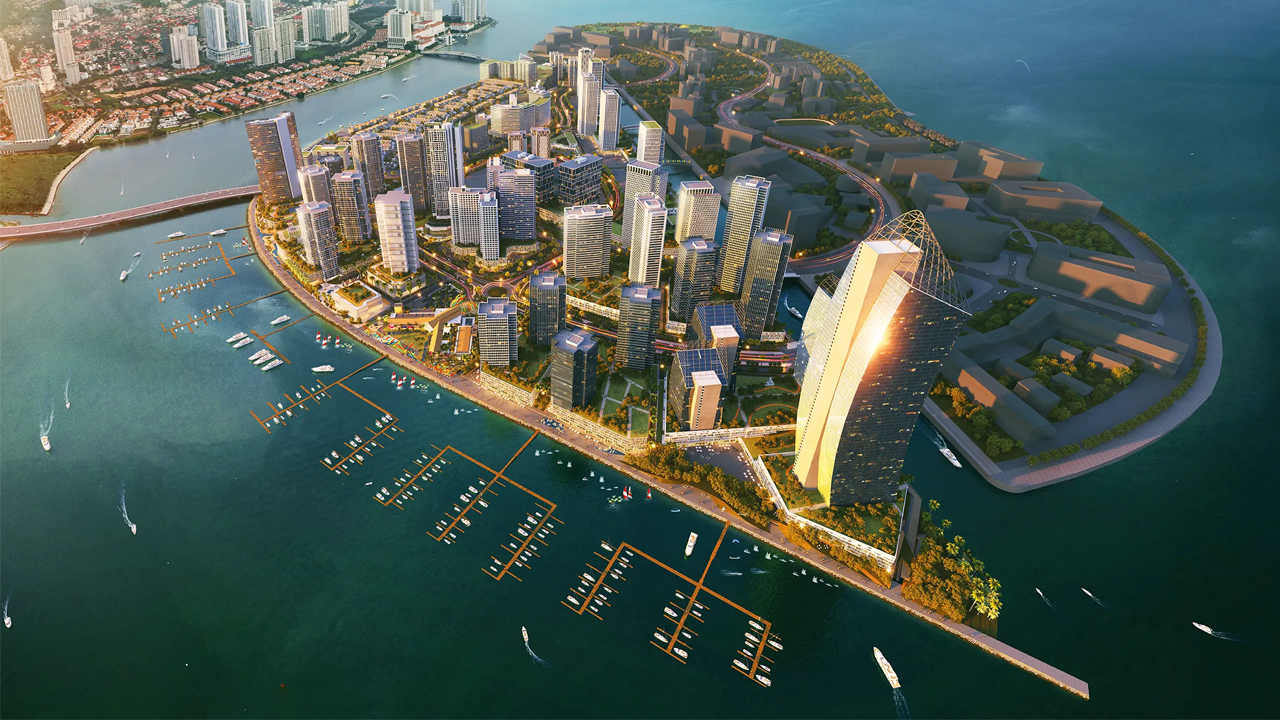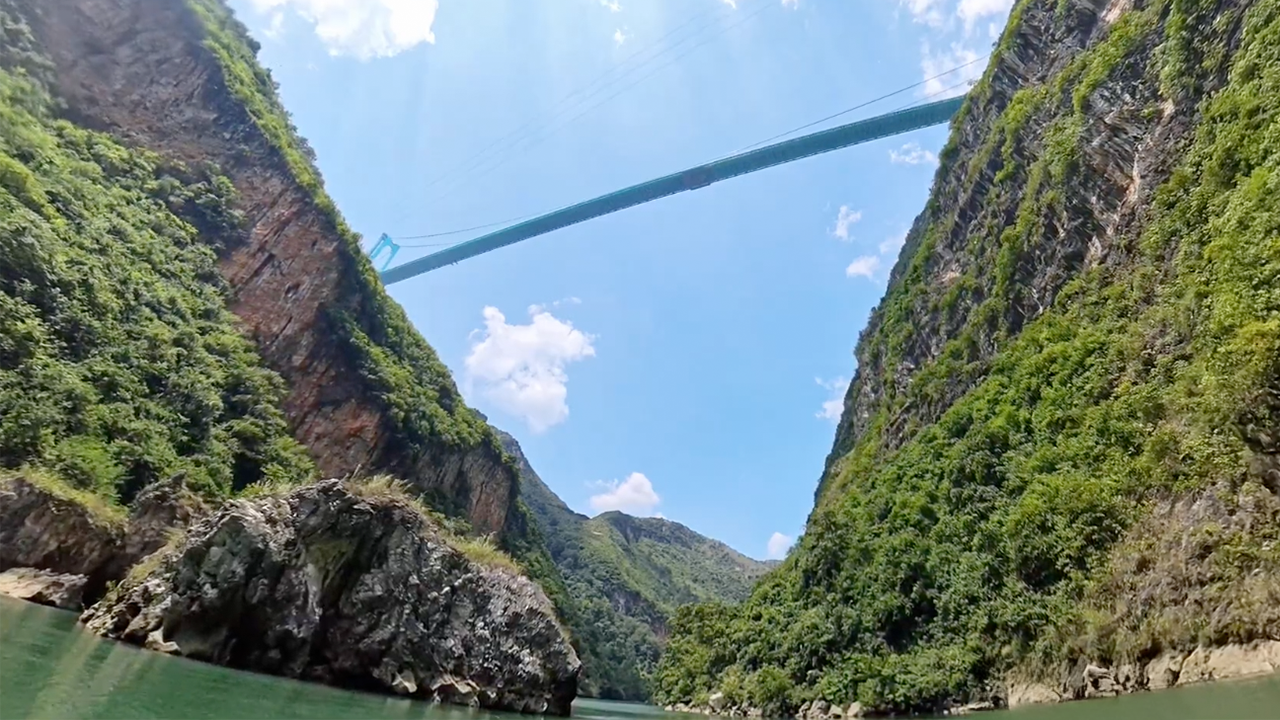Why Paris is Doubling Its Metro
- Youtube Views 431,330 VIDEO VIEWS
Video narrated by Fred Mills. This video and article contain paid promotion by Trimble.
THIS is the kind of project that only really comes along once in a century: The Grand Paris Express.
It’s Europe’s largest infrastructure scheme – a USD $45BN rail line carved out beneath the French capital and stretching over 200 kilometres.
The numbers are eye-watering. There’ll be 68 new stations, four brand new automatic metro routes, the expansion of two existing lines on the network, 3M passengers transported every day and journey times cut by as much as half an hour.
The pièce de résistance is a mammoth 76-kilometre ring that will connect the city’s outer suburbs for the first time.
At its peak, 100-metre-long tunnel boring machines were pushing forward by 12-metres a day. The project is immense in every sense of that word – and it’s about to radically transform Paris.

Above: A map of the planned new lines and extensions that will make up the Grand Paris Express.
Paris is a city of revolution; a city built on change. It’s safe to say that France’s capital has gone through more than its fair share of historic, fundamental transformations over the centuries.
Between 1853 and 1870 Napoleon III famously demolished the city’s medieval neighbourhoods to make way for the grand boulevards we know and love today. This new railway is kind of on a par with that.
The next iteration of Paris
Right now, Paris’ metro only really serves the city’s very centre. And that’s a problem. Paris isn’t just its 20 arrondissements; it’s a sprawling megacity that’s home to an estimated 7.2M people.
Public transport, especially the metro service, has the ability to unlock the potential of disconnected areas and create new destinations.
London did it with its famous Tube and China is now doing it with multiple lines uniting the areas around Shanghai and Beijing.

Above: The scale of the Grand Paris Express is massive. Image courtesy of Société des grands projets.
The most impressive feature of Paris’ rail overhaul directly addresses this centrality. Line 15, a 76-kilometre circular route will connect the southern and eastern suburbs with Saint-Denis in the north and the business district at La Défense in the west.
It’s essentially a giant loop that goes around the outskirts of the city. Instead of only being able to travel in and out of the centre, you can now journey between suburbs too, and that’s expected to boost regeneration and the economy.
Paris will transform from a city with one centre to a city with multiple centres. A multipolar metropolis. Democratisation through infrastructure. A revolution through trains.

Above: The Express will connect disparate areas of Paris that desperately need it. Image courtesy of Société des grands projets.
Proposals for this mega development stretch way back to 2007, but construction of the new lines began in June 2015 and is being carried out in several phases right up to 2030.
Fully automated, driverless trains will run on the new network at an average speed of 60 km/h, nearly double that of the current Paris Metro – a move that could go a long way to solving the driver shortages experienced on some lines.
An incredible 75% of the network will run underground in two-lane subway tunnels – and that’s meant an immense tunnel boring operation.
Out of sight, beneath the feet of Parisians, 100-metre-long tunnel boring machines are creating tunnels at a rate of ten to 12-metres a day — that’s three kilometres a year.
To get the TBMs to their boring depth they are first lowered in pieces down shafts along the route of the tunnel. Once on-site these massive machines are fully assembled below the streets of Paris.
The TBMs then excavate, support and line the tunnels with concrete as they move forward, leaving behind a safely completed tunnel, ready for the mechanical, electrical and computer systems to be installed.

Above: The TBMs carefully manoeuvre under foundations and existing structures. Image courtesy of Société des grands projets.
When construction works first peaked in 2020, work on all four lines plus the Line 14 extensions was all taking place simultaneously.
While the metro tunnels of the early-1900s sat just ten metres or so below ground, the tunnels for the Grand Paris Express sit 30-40 metres beneath the city — avoiding more than a hundred years' worth of underground utility infrastructure.
The Saint Maur – Créteil station in the southeast of the city will be even deeper. At 52-metres it will be both the deepest station on the Grand Paris Express, and the deepest in France.
The new stations add yet another level of complexity. First, a reinforced waterproof wall is built around the roughly 9,000-square-metre sites. That creates a 60-metre-deep box for work to take place before excavation.
60 percent of the civil engineering work for the stations is then completed before the giant TBMs worm their way to the site and eat through the solid rock.
Following the excavation, internal structures are then built. This includes multiple levels, mezzanines, platforms and a roof slab - the parts of the station you actually experience as a passenger.

Above: Internal structures are built after excavation work is done. These will become future stations. Image courtesy of Société des grands projets.
“It is one of the largest urban projects in Europe. There has not been such an important transportation project in the city so far,” Léo Belle, project designer and detailer for Bouygues, tells us. He’s been working on the Grand Paris Express for nearly two years.
It’s crucial for every part of this enormous operation to run cohesively and on time, and software from our sponsor Trimble has been an essential part of making that happen.
Field surveys, which monitor construction progress and provide reference points to guide the team, were conducted using Trimble Access software, Trimble S7 total stations and the Trimble TSC7 controller.
The Tunnels Module for Trimble Access software includes a solution specifically designed for automatically measuring and analysing the various points on the inside of the tunnel rings.
That kind of data is essential to the teams building this project. Trimble has already ensured faster timelines and richer data and its tech is being deployed at several of the Grand Paris sites.

Above: Trimble has been crucial in the development of the Grand Paris Express. Image courtesy of Société des grands projets.
“Trimble, with its software, outperforms the leaders in the market,” Belle tells us. “If you really want to try working with data in the structures, meaning having attributes on each reinforcement, you need to build it.
“You often have to work on designing a construction site with a lot of data and input a vast amount of information in order to export the models, enabling smooth collaboration among project stakeholders. Trimble truly has a strong and highly valuable capability in managing this process.
“So today, we are increasingly required to create comprehensive documentation and share a wealth of information through digital modelling and data.
“On this project, Trimble is actually capable of providing us with many of the necessary tools to execute this project under these conditions.”
Today the megaproject stands more than 30 percent complete. While initial hopes had this entire project wrapping-up before the 2024 Olympics, a more realistic aim has since been adopted.
Now, just the first bit, which includes the extension to Line 14, will open in time for Games, helping ease the burden of the anticipated 16M tourists that are anticipated to descend on Paris for the Olympics.

Above: The Express is part of a number of massive changes undergoing Paris for the Olympics. Image courtesy of Société des grands projets.
The past few years have seen Paris go to great pains to revitalise itself as one of Europe’s most sustainable cities. And the new metro plays into the messaging for the 2024 Games extremely well. The green games for a greener city.
By 2030 Paris aims to be 50 percent green spaces — an enormous leap from the 9.5 percent it currently has. And the French government has set itself the goal of cutting carbon emissions by 27.6M tonnes by 2050.
It’s doing that in part by returning roads to the people and taking cars off the streets. The Grand Paris Express will help remove the need for 150,000 vehicles, helping the city to cut its carbon footprint in time.
With great swathes of this city becoming reachable on public transport, the government is hoping the benefits of a cheap and efficient metro will far outweigh the costly and frustrating process of driving through the city in peak hour.
Paris is a city of revolutions and this railway is its next revolutionary act. It’s more than just a metro line, it’s an enormous once-in-century infrastructure megaproject that’s using the power of construction to open up the French capital like never before.
Narrated by Fred Mills. Footage and images courtesy of Société des grands projets, PCA Stream and Trimble.
We welcome you sharing our content to inspire others, but please be nice and play by our rules.








